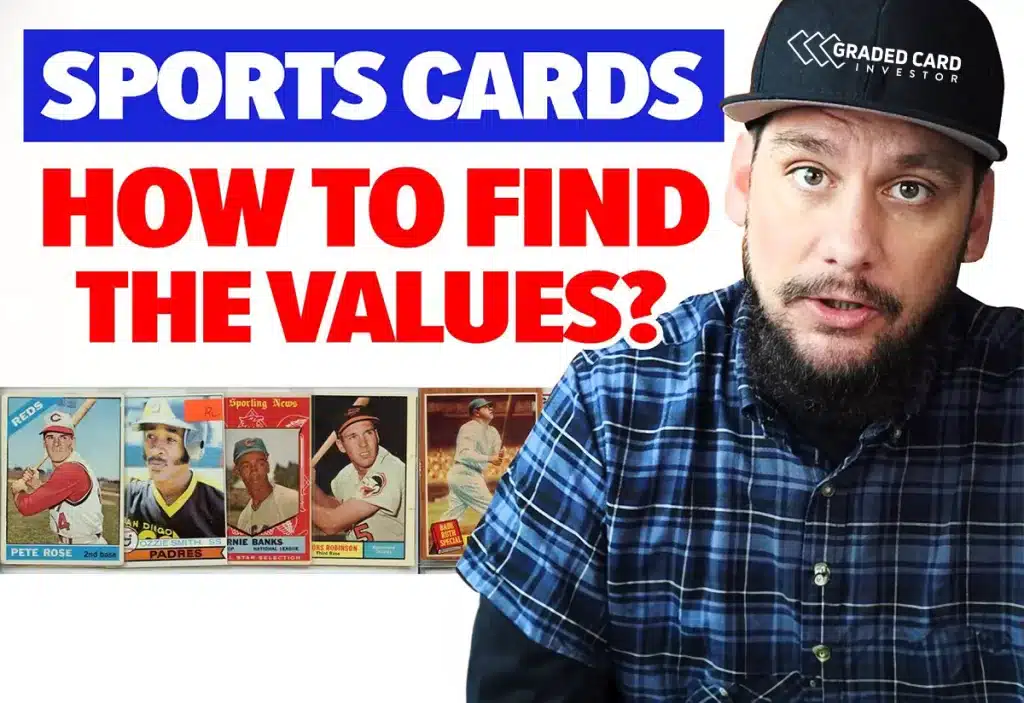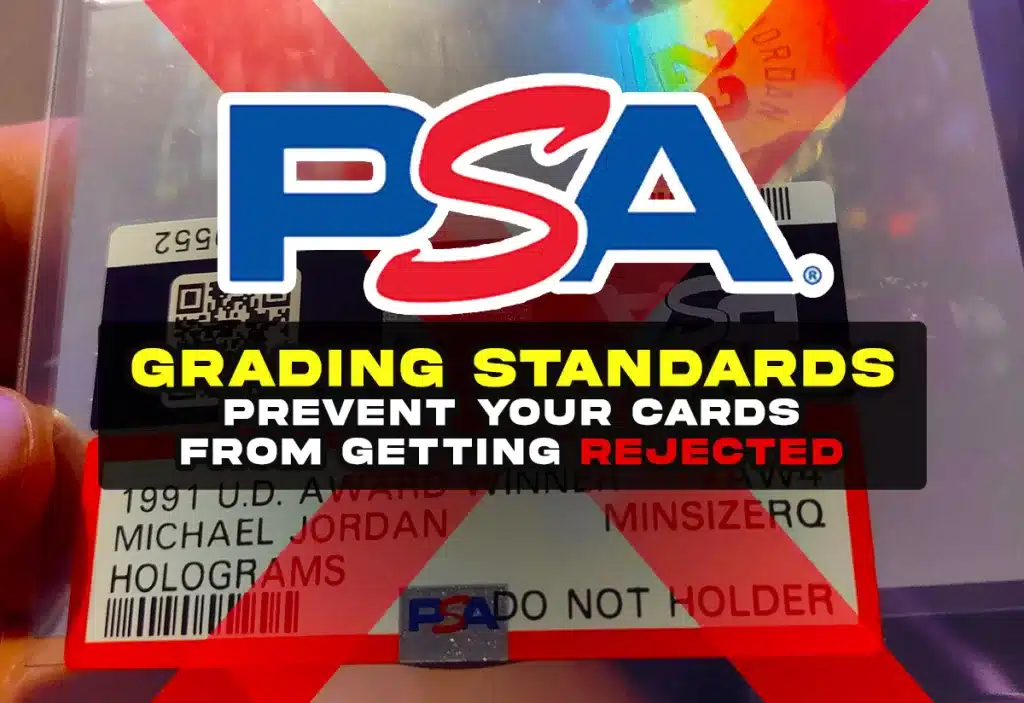A Pro’s Guide to Navigating the World of Sports Card Values
In the intricate universe of sports card collecting, where passions run deep and investments are substantial, determining the true value of a card—be it baseball, football, basketball, or hockey—requires both expertise and a pulse on the evolving market trends.
Let’s demystify the process.
➡️ Watch the In-Depth Tutorial on my YouTube Channel!
1. Grappling with Fluid Sports Card Values: A Constant Flux
Embark on your sports card valuation journey with a pivotal truth: there is no steadfast value for a card. The worth of a Mickey Mantle, Tom Brady, or a Michael Jordan card isn’t static.
The $200 value tag it boasted yesterday might morph into something starkly different today, propelled by factors like player performance, scandals, or simple market whimsy.
Rarity, Scarcity, and Unpredictable Values
Recognize that card values are swayed not only by fluctuating market conditions but also by their rarity and scarcity. Misprints, limited editions, and first editions often carry premium values due to their scarce nature.
History vs. Future: Player’s On-Field Impact
Cards of players with an illustrious career or anticipated future potential often demand higher prices. Rookie cards, especially, can surge in value if a player begins to shine brightly in their career.
2. eBay: Your Window into Real-Time Market Values
In the throes of fluctuating values, eBay emerges as a reliable ally. It stands out not just as a marketplace but as a rich data resource where one can pierce through the veil of speculative sports card values and prices, peeking into what collectors are genuinely paying.
There are some other auction houses to look at as well for higher end cards including:
Always navigate through the ‘Sold Listings’. This is where actual transaction prices—not just hopeful listings—are unveiled, offering a truthful reflection of the current market.
3. Employing eBay’s Advanced Search: A Focused Approach

Harness the potential of eBay’s Advanced Search feature to avoid drowning in the ocean of listings.
When searching include key details such as:
- the athlete’s name
- card manufacturer
- year of issue
- parallel or insert name
- condition of the card
Including those details will narrow down your search, focusing on relevant transactions. Remember, the ‘sold listings’ tick box is your ticket to real, concluded deals.
4. The Grading Paradigm: Accurate Comparisons of Sports Card Values
In your valuation venture, understanding the difference in worth between graded and ungraded cards is paramount. Graded cards have been meticulously evaluated by professional grading companies, ensuring their condition and authenticity.
Read this article about the differences between the four primary grading companies.
Comparing a graded card to its raw, ungraded counterpart is akin to juxtaposing apples and oranges—both may be fruit, but they cater to different tastes and markets.
5. The Power of Selling in Lots: Maximizing Lower-Value Cards
When individually your cards might not fetch a premium, bundling them into lots can elevate their market appeal. Consider this strategy especially for cards of lower value or common cards. Selling them as a cohesive unit not only makes them more enticing for buyers, it can also provide a shipping cost advantage, and often, a quicker sale.
Wrapping It Up: An Ongoing Learning Curve
While this guide seeks to illuminate your path in the sports card valuation realm, remember that the market is perpetually evolving. Staying informed, being adaptable, and applying learned strategies like using eBay for real-time valuations, recognizing the impact of grading, and strategically grouping cards into lots will fortify your position in this vibrant hobby-turned-investment field.
Stay curious, keep learning, and may your sports card journey be both prosperous and enjoyable.
From a young age, Matt dove deep into sports card valuation, turning to esteemed price guides like Beckett and Tuff Stuff. Eventually he extended to Pokémon, Magic: The Gathering, and Yu-Gi-Oh!. With a vision to sustain and nurture the hobby he loved, Matt established the ‘Graded Card Investor’ YouTube channel and website. He aims to foster a healthy community and offer invaluable insights to those entering the world of sports cards and TCGs. His depth of understanding, from the card market’s 2020 pinnacle to its 1990s valleys, is consistently fortified by meticulous research.


